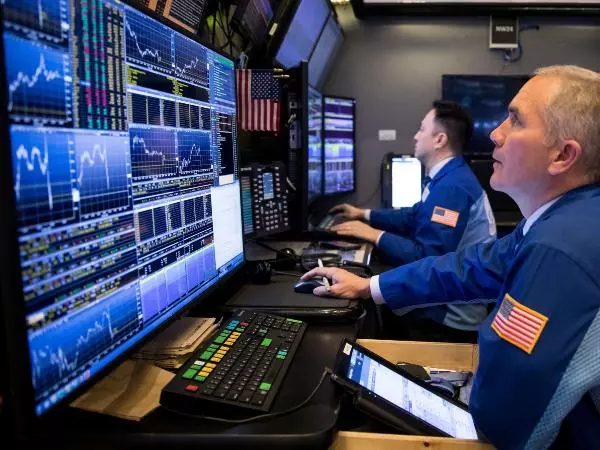How to trade copper
Copper's critical role in renewable energy and global infrastructure makes it one of today's most strategic commodities. Discover how Singapore traders can capitalise on copper price movements with this comprehensive guide.

Key takeaways
- Copper is a strategic commodity linked to global economic health and the green energy transition, offering traders unique opportunities to capitalise on price movements.
- Understanding the key drivers of copper prices, including demand factors (construction, electronics, renewable energy) and supply considerations (mining, production costs), is crucial for developing effective trading strategies.
- Traders can employ a range of approaches, such as trend-following strategies, mean reversion techniques, and leveraged instruments like CFDs, to navigate copper's volatile price fluctuations, while carefully managing risks through proper position sizing and stop-loss orders.
What is copper trading and why consider it
Copper is a barometer for global economic health. As essential to Singapore's green transition as it is to traditional infrastructure, copper offers traders unique advantages.
This versatile metal powers everything from the electrical grid in your Singapore HDB to the latest electric vehicles. When economies expand, copper demand surges; when they contract, demand weakens. This relationship makes copper not just a commodity, but a window into global economic health.
Different ways to trade copper
Modern financial markets offer several approaches to copper trading:
CFDs
CFDs provide a flexible way to gain exposure to price movements without owning physical metal.
- Trade in both rising and falling markets
- Access leverage (though this increases risk exposure)
- Avoid physical storage concerns
- Enter and exit positions quickly with competitive spreads
Futures
Copper futures contracts are standardised agreements traded on exchanges like COMEX. While offering high liquidity, high grade copper futures involve considerations around contract expiry dates and potential physical delivery obligations.
ETFs
These ETFs track the performance of copper prices through a conventional stock exchange. While simpler to access through regular brokerage accounts, they typically offer less leverage than CFDs or futures.
Shares
Copper mining shares provide indirect exposure through companies that produce copper. While these stocks offer potential dividend income alongside price appreciation, their performance depends on company-specific factors beyond just metal prices.
What moves copper prices?
Understanding what drives copper's price movements is essential for developing effective trading strategies.
Demand factors
1. Construction industry
As the largest consumer of copper, construction activity, particularly in China and emerging markets, significantly impacts prices.
2. Electrical and electronics
From household wiring to advanced electronics, copper's unmatched conductivity makes it essential for modern technology.
3. Renewable energy
Electric vehicles, solar panels and wind turbines require substantially more copper than traditional alternatives, creating growing demand as Singapore and global economies continue to pursue sustainability goals.
Supply considerations
1. Mining production
Labour strikes, equipment failures or weather disruptions in major copper-producing countries like Chile and Peru can quickly affect global supply.
2. Development timelines
New copper mines typically require 7-10 years from discovery to production, creating lag between demand growth and supply response.
3. Production costs
Energy prices, environmental regulations and resource quality all affect the economics of copper mining and production.
Macroeconomic influences
1. US dollar strength
As copper is priced in USD globally, currency fluctuations affect purchasing power for international buyers.
2. Interest rates
Central bank policies impact borrowing costs for copper-intensive projects and affect broader economic growth.
3. Global trade policies
Tariffs, sanctions and trade agreements can disrupt copper's international flow.
4. Inflation expectations
Copper often serves as an inflation hedge, with prices rising during periods of currency devaluation.
Copper trading strategies
Before executing trades, understanding different strategic approaches based on market conditions is essential.
Strategies for trending markets
When copper establishes a clear directional trend, these techniques can be effective:
- Moving average strategies: When faster moving averages (like the 10-day) cross above slower ones (like the 50-day), this signals potential uptrends. Reversing crossovers may indicate downtrends beginning.
- Breakout trading: When copper prices break above resistance or below support with increased volume, the move often continues in that direction, creating potential momentum trading opportunities.
- MACD indicator: This tool helps identify strengthening or weakening trends by comparing shorter and longer-term momentum. Divergences between price and MACD can signal potential trend reversals.

Strategies for range-bound markets
During consolidation phases, copper often trades between established support and resistance levels:
- Mean reversion: Based on the principle that prices tend to return to their average after moving toward extremes. Buying near support and selling near resistance can potentially generate profits even in sideways markets.
- Bollinger Band techniques: These dynamic channels based on price volatility help identify potential reversal points. Touching the lower band often presents buying opportunities, whilst approaches to the upper band may signal selling opportunities.
- Oscillator indicators: The RSI becomes particularly valuable in ranging markets. Readings below 30 frequently indicate oversold conditions with potential bounces, whilst readings above 70 suggest overbought conditions where price might struggle.

How to trade copper: step-by-step guide
With an understanding of copper's price drivers and trading strategies, you're ready to begin trading.
1. Create an IG live account
Creating a live account with IG Singapore is straightforward:
- Tell us about you
- We'll verify your identity
- Fund your account
- Start trading copper
Not ready to commit real capital? Practice first with our demo account featuring $200,000 in virtual funds.
2. Develop your copper trading strategy
Our in-platform tools provide resources for identifying opportunities:
- Expert market analysis
- Technical indicators and drawing tools
- Real-time news feeds
- Trading alerts and signals
Both technical and fundamental analysis help identify potential trades:
- Technical analysis: Examine price charts using the strategies discussed earlier to identify patterns and potential entry or exit points.
- Fundamental analysis: Stay informed on economic releases, mining production reports and exchange inventory levels that drive copper prices.
3. Open and monitor your position
With your analysis complete, executing your trade is simple:
- Searching for ‘copper’ or finding it under ‘commodities’ in the left-hand menu
- Selecting ‘spot’ at the top of the deal ticket in the right-hand panel
- Choosing your trade size
- Opening your position by clicking ‘buy’ or ‘sell’
Once your position is open:
- Monitor price movements and relevant news
- Adjust stop-losses as needed to protect profits
- Close your position when your analysis suggests the move has completed

Managing risk in copper trading
Copper's volatility makes effective risk management essential:
- Stop-loss orders: define your maximum acceptable risk before entering trades. These orders automatically close positions if prices move against you by a predetermined amount.
- Position sizing: ensure that even promising trades don't risk more than 1-2% of your trading capital per position. This approach protects against significant account depletion from losing streaks.
- Leverage: discipline is crucial when trading copper CFDs. Consider using lower position sizes than you might with unleveraged investments, as leverage magnifies both profits and losses.
- Correlation awareness: this matters when trading copper alongside other assets. During market stress, copper often moves with equity markets and other industrial commodities, potentially amplifying portfolio risk.
FAQs
How does copper trading compare to other metals like gold and silver?
Unlike precious metals that often move on sentiment and inflation concerns, copper correlates more strongly with industrial production and economic growth cycles. It typically exhibits higher volatility than gold but less than silver, making it an excellent diversification option for metals traders.
How can seasonal patterns affect copper trading?
Copper typically shows seasonal strength from December through April due to increased industrial activity following the Chinese New Year and construction cycles in the Northern Hemisphere. September-October often sees price weakness as construction slows heading into winter months.


